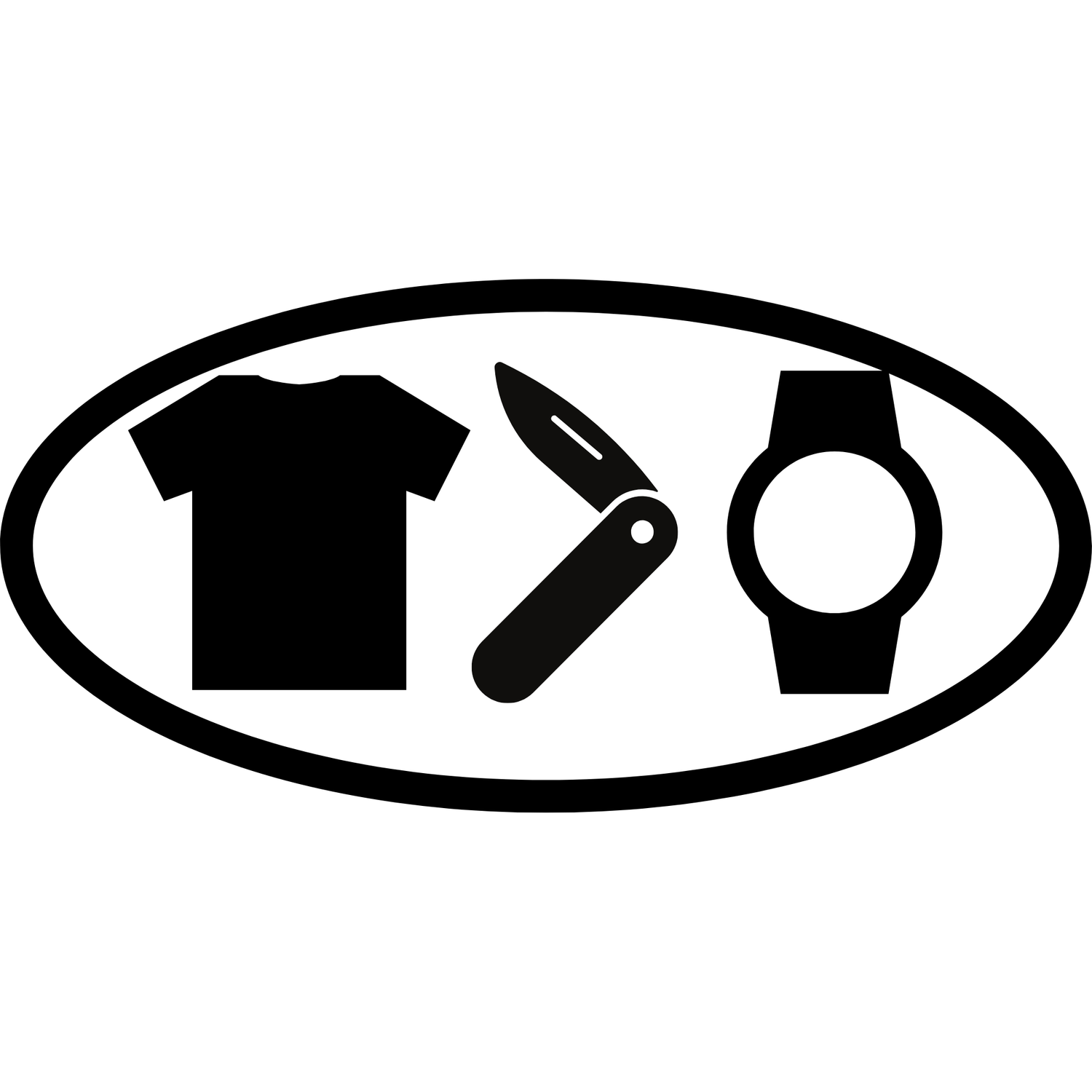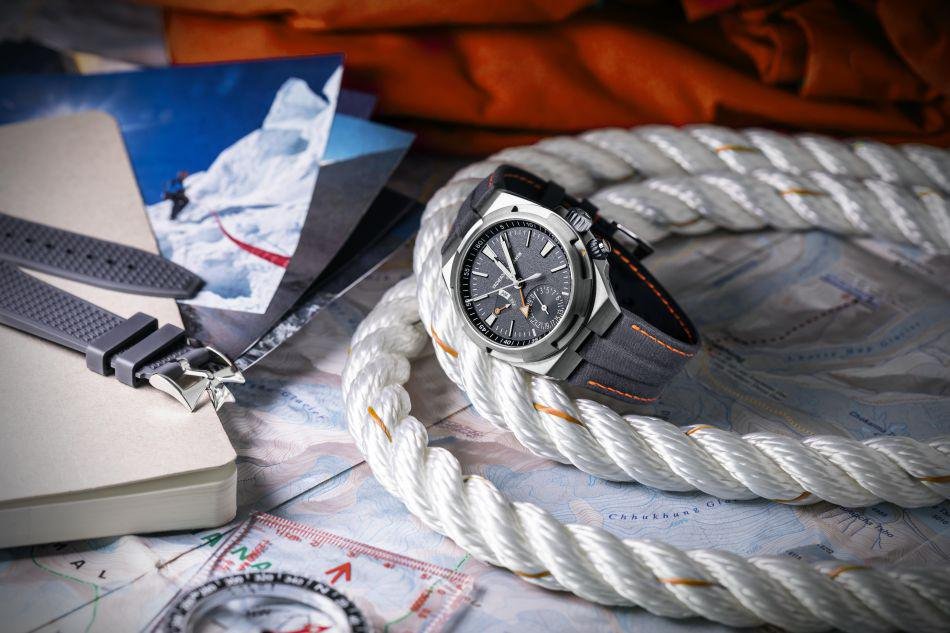The Treasure Chest - The Tudor North Flag Is the Most Discouraging Watch of the Last Decade
This is another entry in the “Treasure Chest” series, where I take a look at watches that have been overlooked by the watch community. You can read the first article in the series here.
Note 1: In this article I provide many links to external sources. I provide these only for credit or further context, and no endorsement is implied. I do not receive any compensation from providing these links.
Note 2: If you do want to support my work on this site, please visit my SHOP page.
“Luck is when preparation meets opportunity”.
I hate this phrase.
It is such bullshit, but I definitely get the impression that this is an unpopular opinion because it is an exceedingly common refrain - almost a truism - in certain circles, mostly on LinkedIn and #keepgrinding accounts on Instagram. “Hate” is a strong word though, so I should explain why hearing this makes my skin crawl.
This saying is nowhere nearly as clever-sounding as tech/finance/crypto/GaryV-bros think it is. Taken at face-value, the phrase implies that there is no such thing as “dumb” luck; everything is entirely in one’s control, all one has to do is work hard consistently, and then one day magically everything will just click into place and you’ll get everything your heart desires.
“Geez, well that sounds awesome!", you think to yourself.
But then you take another second and you think:
“Hold on, I can do the preparation part, but what about the opportunity?”
Yes, we can network like maniacs or walk past the CEO’s office every day on the way to the bathroom, PowerPoint deck filled with ideas in-hand, but sometimes “opportunity” and “dumb luck” really are the same thing.
Did you email the recruiter when they just happened to be swamped? Is the CEO really going to notice you, or did the opportunity for a promotion belong to his golf buddy’s son all along, who was lucky enough to be born into the right family?
What I’m getting at here is that “Luck is when preparation meets opportunity” sounds very causal - do a, then b, then sit back for c - but it’s actually very circular, and it’s used in reverse by people who have already made it.
This is the main reason I can’t stand this saying: it relies on a massive survivor bias to make sense, and for every person who was able to get in front of Kanye because the timing was just right, who sent one article to the New Yorker and got a big break, or emailed the CEO out of the blue and was hired on the spot, there are many others who did the exact same thing (perhaps more), with similarly good supporting material, and did not obtain the same outcome.
But, if you’re on the winning side, you can dismiss any and all circumstance that went into your success and chalk it all up to your hard work when you say “well I just out-hustled everyone and was prepared when the opportunity came”.
I already know the main objection to this, so no, I’m not taking away from the hard work these lucky few did do after they got their opportunity (I’m glad Anthony Bourdain went as far as he did because I’m a huge fan of his content), but I have a saying of my own:
Generally-speaking, everyone who has “made it” will have worked hard, but not everyone who worked hard will have had the chance to “make it”.
What does any of this have to do with the Tudor North Flag?
The Tudor North Flag may be gone, but thankfully I own one and can enjoy it for many years and decades to come.
The sad truth is that in life, you can do absolutely everything right, take risks, outwork everyone, and still watch the slacker coast past you because when it counted they caught a lucky break or two more than you did.
Tudor DID do everything right with its North Flag, and yet this is a model that went nowhere. I’d go so far as to say that there is Tudor “pre-North Flag”, and Tudor “post-North Flag”, and the current trajectory that Tudor is on is almost entirely due to this model not taking off, when in fact it objectively had everything going for it.
Perhaps even the trajectory of the ENTIRE WATCH INDUSTRY can be tied back to the failure of the North Flag.
Quite simply, the Tudor North Flag is the most discouraging watch of the past decade.
2012 was only…oh wait…
As you get older, there’s some weird relativity effect whereby the more years you pick up, the faster they go by. If you’re pushing the big 4-0 like I am, this leads to many situations where you think to yourself “oh yea I remember that, it wasn’t so…”
“Oh no”...
“Wow, yea that was a long time ago”.
I can grasp intellectually that the older you get, the less a set interval of time makes up in your life than it did when you were younger so it feels shorter than it actually was, but that doesn’t take the shock out of the math.
While 2012 might not seem so far away, it was a DECADE ago and in that time the watch industry has changed tremendously. To illustrate this, let me pull up three facts and article extracts from Baselworld 2012:
This was the year Tudor came roaring back onto the global stage with the Pelagos and the Black Bay. Today, no one is thaaaat surprised when Tudor releases yet another Black Bay (the 925 was out of left-field though, I’ll admit that), but back then this was a pretty seismic development.
Rolex released the Rainbow Daytona, and I remember thinking “WTF”. I clearly wasn’t the only one, here’s an extract from an article on Monochrome: “Let’s assume there’s a market for this new Daytona Rainbow. Especially now more and more women are wearing men’s watches and the Rolex Daytona appears to be a popular model among the ladies. Please take your sunglasses of again, I promise to show some models which are visually less loud.” I don’t mean to pick on Monochrome specifically, but this paragraph is in no way reflective of the current market for that watch. In 2022, flex culture rules and the more expensive-looking your watch is, the better.
The watch market was just generally a much less “mainstream” space, and looking at the trend for Genta-designed (or inspired) watches specifically, it is still half a decade off.
Here are some price graphs pulled from Chrono24 for the two heavy hitters in the category (for examples produced in 2012, with blue dial and with box and papers):
Price chart of the Patek Philippe Nautilus 5711, blue dial, with box and papers, produced in 2012 (Source: Chrono24).
Price chart of the Audemars Piguet Royal Oak 15202, blue dial, box and papers, produced in 2012 (Source: Chrono24)
Granted, the graph does not go as far back as 2012, but I think we can all agree that the most likely hypothesis is that the price trajectories for both these watches from 2012 to about the end of 2018 was a completely flat line.
Ten years ago, long time, right?
The glorious debut of the North Flag and its gorgeous movement
In 2012 I was still very much at the beginning of my watch journey so I didn’t have nearly as much foundational knowledge with which to contextualize what was happening, but I do remember the watch press falling over itself to praise the Black Bay Red.
In 2015 when the North Flag launched I remember the watch press also losing their shit over this watch, for reasons I’ll broadly split into two categories, the movement and the design.
Get ready, it’s rant-time…
Even ugly movements deserve love
Not all movements are created equal, but that doesn’t mean that we shouldn’t celebrate each and every company that attempts to create its own. Setting aside the very real, practical concerns about parts cost and availability down the line, a watch movement - even in today’s digital age - represents a new take on problem solving and is a testament to human ingenuity.
Why would anyone want NOT want to see that?
Well, many people, it turns out, since the overwhelming consensus in the watch community is that Tudor’s in-house movements are ugly and should all be hidden behind case-backs (for Tudor this view started with the North Flag and continues to this day, with other Tudor movements finding their way into other watches such as the solid gold Tudor Black Bay 58).
Before I launch into my rant, let’s take a step back and recall the general considerations of movement design (setting aside cost):
Movement specifications and capabilities: what complications will it have, what will its power reserve be, how much shock should it withstand, etc.
Movement architecture: how the assembly should be laid out (for instance, does it use 3/4 plates? finger bridges?)
Movement finishing: once all the parts are laid out and assembled, how much extra care should be given to the aesthetics of the overall package? Perlage, Geneva Waves (in the case of a Swiss watch), etc.
If movement design were a video game and you could create your own “character” (movement), each of these three considerations would be a slider that you could move back and forth to get assemblies that were more or less high-performing and/or beautiful to look at. On the low end with everything zero’d you’d get a movement out of a Vostok, and with everything turned way up I suppose it would be something out of a Greubel-Forsey.
I’m not even sure that’s a true statement though, because while those watches feature world-class finishing, and I’ll never have the chance to put a Greubel-Forsey through the ringer (not that I would really want to anyways), I can’t see them being what you’d call “tough”, perhaps not even on the level of an ETA 2824 (happy to be corrected in the comments if you have supporting data!).
What I’m saying is that I don’t think there is a watch out there that maxes out on both beauty AND performance specs. With that in mind, we shouldn’t discount a movement just because it’s not conventionally attractive, and indeed the capabilities of a movement are worthy of praise just as much as its aesthetics.
Speaking of capabilities, the Tudor MT5621 is well equipped:
28 jewels
70 hours of power reserve
Silicon balance spring
Free-sprung balance
Full balance bridge
Date and power reserve complications
COSC-certified
The Tudor MT5621 was likely a big investment for Tudor, and the team that worked on this deserves to feel proud, so it’s always frustrating for me to hear “this movement is ugly I wish they had just covered it with a solid caseback”.
Why?
Isn’t part of the fun of owning a mechanical watch getting to see the magic that happens inside, and be amazed that humans can think of and build such things?
Perhaps substituting Richard Mille for Greubel-Forsey a few paragraphs up would have made more sense, but even those movements are not particularly well finished. They do however display technical characteristics that owners might find fun to enjoy.
The whole “there’s no hand-finished anglage on this movement so it should be covered up” trope is just annoying at this point. It’s one of those group-think opinions that gets fired off reflexively, without any thought, presumably because the person sharing it thinks it will get them more credibility on whatever message board or comments section they frequent.
Now, do I wish that watch companies offered you a choice (similar to how Nomos does it)?
Until this choice becomes widespread, I would much, much rather be able to see the movement by default. After all, the dial is what you spend most of your time looking at, and if the “in-house” part of “in-house movement” interests you, don’t you want to actually, I don’t know, see the movement? I suppose that if I already owned an ETA 2824-equipped watch and happened to buy another, sure, I could live with one being covered up, but if the movement is unique to my collection, I want to be able to see it!
Beyond the perceived ugliness of the movement, I’ve heard other comments regarding the power reserve indicator. This is a fair statement and ultimately comes down to subjective taste. Personally, would I have felt the watch was missing something if it were removed? Absolutely not, and gaining a “9” numeral would make for a neat call-back to the watch’s original inspiration (more on that below), but knowing how much juice you have left in your watch isn’t useless information, so I’m happy to live with it.
At one point, maybe halfway into the Tudor North Flag’s life cycle, I did hear a rumor that a new version would be released, swapping the power reserve indicator for a second time zone, and that, my friends, would have been absolute, scorching FIRE.
Sadly, that never came to pass - and may never - which is a shame, because if you contemplate the watch’s overall design, you’ll realize it’s the rare model that balances vintage design cues with contemporary styling really well.
The North Flag is a heritage re-issue dialed up to 11
Even with the half-decade I had in the watch world at the time of the North Flag launch, I had never heard of its inspiration, and to this day I have never once heard it mentioned outside the context of the North Flag (compare that to the Rolex 1016, for which I seem to catch at least one mention a day).
Behold, the Tudor Ranger 2:
You can clearly draw a line from this watch to the North Flag, but that doesn’t stop the Ranger 2 from being weird…
Like…
Really weird.
This watch is a pastiche of design cues that were found in (or eventually showed up in) the Oysterquartz, the Explorer 1016 (those 6-9-12 Arabics) and the Rolex Explorer II 1655. Even the integrated bracelet geometry is awkward looking, since on most watches of this nature the case and lugs are flared out before moving to the bracelet, whereas here there is a very, very sharp tapering to the bracelet.
Again, it just looks really weird.
As an aside, the only source I could find from a cursory Google search stated that the Ranger 2 appeared in 1973. I’d love for that to be confirmed or corrected in the comments, but if we assume that year is correct, that places it right after the launch of the first Royal Oak in 1972. To the extent that watches don’t just materialize overnight, who was influencing whom here?
Anyways, conspiracy theories aside, I want to spend a little more time talking about the fact that the Tudor North Flag is an integrated bracelet sports-watch. I mean, the watch blogosphere was psyched about the fact that for the first time ever, Tudor had employed an in-house movement in one of its watches, but can you imagine what the reaction would have been if this watch had launched in 2018 or 2019?!
Tudor, the Tudor that is owned by Rolex, the hottest brand in the world that will likely never release another 70’s style, integrated bracelet sports-watch…
Releasing its own integrated bracelet sports-watch which has true heritage going back to the fricking Royal Oak…
Built to be an actual, robust sports-watch (unlike the dainty Royal Oak)…
With an in-house movement…
Priced weeeeelllllllll under $4,000 on stainless steel bracelet.
This would break the watch internet!
Unfortunately, that is not what happened; after a booming entrance, the watch fizzled out to discontinuation.
What’s even stranger is that, if you’ll indulge me here for a moment, the vibes of this watch are very similar to another watch that did in fact manage to, if not fully break the watch internet, at least crack it.
The Tudor North Flag is the original Vacheron Constantin Overseas Dual Time Everest
While I have an appreciation for the “Holy Trinity” and haute-horlogerie in general, I’ve long since given up the desire to own this type of watch. Sure, there might be just a teeny, tiny bit of sour grapes at play, but being completely honest, I think hype has for far too long infested the upper reaches of the watch world, and I just have a lot more fun learning about the $500 - $5,000 range (also, putting my consultant hat on for a second, I just don’t think the marginal cost to get into something like a Patek is worth the marginal benefit over other alternatives, but I should be careful not to let too much common sense enter into a discussion about watches…)
There is one exception, and that’s the Vacheron Constantin Overseas Dual Time Everest.
Released at the end of 2021, this watch started its life as a prototype two years earlier, strapped to the wrist of photographer and explorer Cory Richards. From the moment I saw the first prototype of the Dual Time (not the chronograph model that was eventually released beside it, I’m totally ice-cold on that one), I was totally smitten; killer looks, titanium, just the right splashes of orange popping against the cool grey theme of the dial and strap, what’s not to love!
It was a limited edition, therefore preventing any chance I might have realistically had to own the watch (go ahead and laugh…).
As I was writing this article though, I took comfort in the fact that I own a very, very close approximation in the Tudor North Flag!
I mean, just take a look at the way that watch was marketed:
The Tudor North Flag was clearly marketed as a tool for adventurers, with mountain climbing in particular being the point of focus; that is evident from the shot above, to the watch being frozen in a block of ice at Salon QP, to Tudor’s official print ads.
Now, consider that the Vacheron Constantin Everest started out on the wrist of a mountain climber, and how the watch was subsequently marketed:
So, the spirit of both watches is identical, and the specifics are pretty damn close as well:
Integrated bracelet sports watches…
Both with “citrus”-colored accents…
Both with straps that play off the dial colors (I’ll admit one difference here, the Vacheron Constantin looks awesome on the strap, the North Flag not so much)…
Both with in-house movements.
Look, I’m not saying that people at Vacheron Constantin sat around a table and said “you know that Tudor North Flag, well, it’s such a success that we have to make our own version”, but I am saying that if you don’t see the similarities between the two watches, we can’t be friends because you probably also think the Earth is flat.
So, what happened?
The Vacheron Constantin was a slam dunk, and the Tudor North Flag was a much more affordable, non-limited watch from one of the industry’s mega-brands, marketed in the exact same way as the Holy Trinity offering.
It should have been a smash.
Instead, it got smashed.
The watch community asked for one thing, and bought another
The price chart for the Tudor North Flag shows the same overall trend as that of the Royal Oak and the Nautilus - a flat line followed by an increase - but looking closer allows one to fully grasp the watch’s depressing trajectory.
The chart shows just how low the Tudor North Flag sank on the secondary market after it was released (Image source: www.chrono24.com).
The Tudor North Flag, which launched in 2015 for $3,675, was trading well under that all the way through 2020. The watch’s value started picking up some steam on the secondary market towards the end of 2021, presumably when rumors of discontinuation started brewing.
Consider that even now, if you run a search on Chrono24 and compare those prices with the results of an inflation calculator, the watch is only juuuusttt about where it should be. In other words, the Tudor North Flag is all nominal inflation, there is no “hype” premium associated with it.
What gives?
I thought hard about what to title this article, and at one point I was thinking of going with “The Tudor North Flag is the Most Disappointing Watch of the Last Decade”, but that’s only partially true.
The Tudor North Flag is categorically not a disappointing watch, it is in fact an excellent watch that balances technical achievements with bold styling, that wouldn’t look out of place with a pair of board shorts in Hawaii or indeed with some climbing gear while setting off from base camp.
The watch IS, however, disappointing in the sense that while the watch community may bemoan the 1000th “heritage-inspired” release from a brand, that is ultimately what they end up buying. Rather than calling on brands to push their designs forward and - crucially - rewarding those efforts with sales, the discourse in the watch community has boiled down to the following:
“Why does this have a date”
“Should have used a solid caseback”
“They should make their watches thinner”
“If it were 2.475364 mm smaller I would buy it”
That’s it.
I’m not saying this is nothing - there is an appreciable difference between a 43 mm watch and a 38 mm watch - but that is how low the bar has been set.
Tudor is the perfect example of this: look at how much fanfare accompanied the company’s two latest, major releases, the Tudor Ranger and the Tudor Pelagos.
Both of these watches were sized down to 39 mm and watch lovers’ minds exploded. I’m not saying that the new Pelagos isn’t tempting, but is it really that much more interesting than the North Flag (also think about how much of a dud the Tudor P01 has been)?
The North Flag came up prior to those releases as a rumored re-boot, and the fact that Tudor has not done anything new with this watch, while favoring its other, far more conventional model lines, tells you everything you need to know about what consumers ultimately value.
So much has changed in the world in the last decade, but this is what consumer tastes have “evolved’ to:
This graphic was originally posted on Instagram by @8past10, and I think you can see what it’s getting at… (Image source: original credit goes to Instagram account @8past10).
Leave it to the serious people at r/WatchesCirclejerk to take a break from the usual chaos to be blunt about the current state of Tudor:
We are now in a time where the “hype” watches are pretty boring (either the usual sports-watch suspects or blinged-out versions of them), and the general releases are, well, pretty boring. That’s not to say they’re categorically bad, but they’re not the Tudor North Flag, and we are a looooonnnng way from the Tudor of old, with the Heritage Advisor, or hell, a red Tudor Black Bay.
With all this in mind, I settled on using the word “discouraging” rather than “disappointing”. The Tudor North Flag is discouraging because it’s a taste of what the watch industry could have been, and a reminder that no matter how hard you try, sometimes success really does come down to nothing more than luck and timing.













